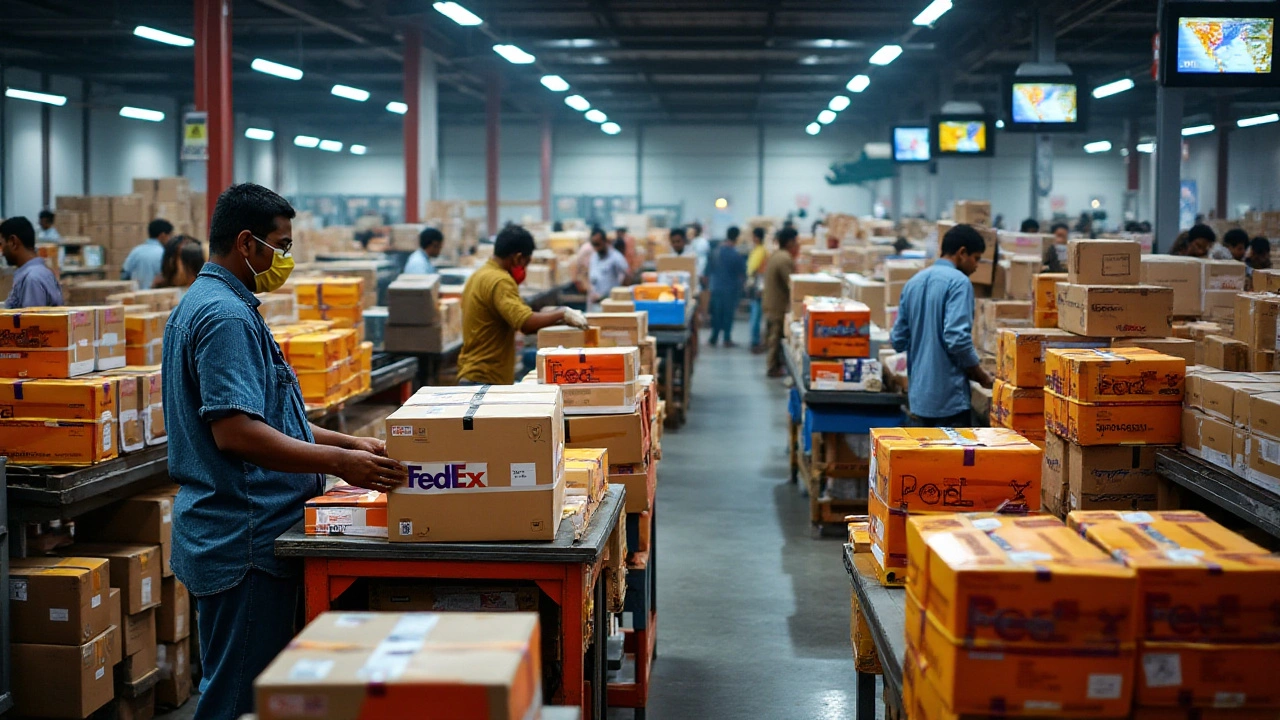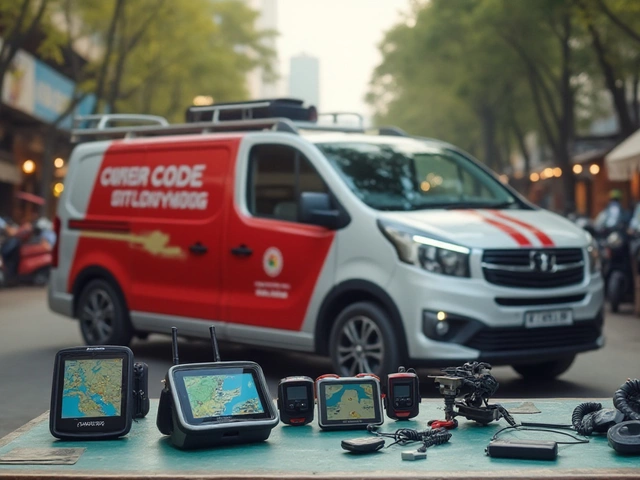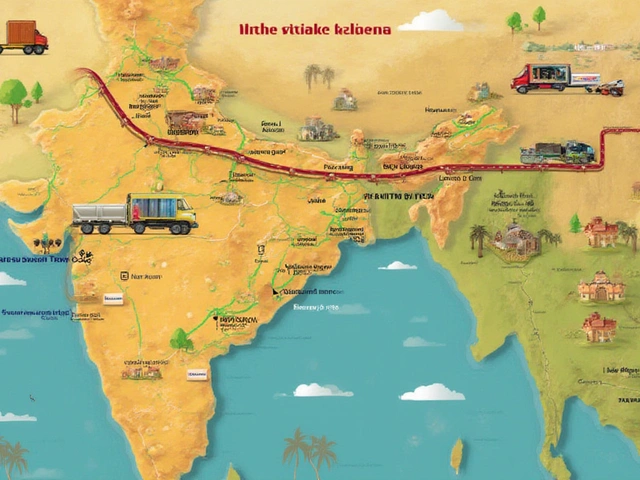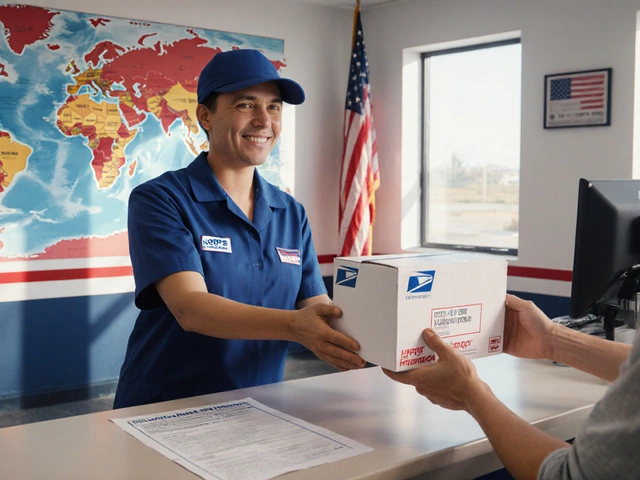In today’s fast-paced world, the demand for speed and efficiency is at an all-time high, making overnight shipping services more crucial than ever. Whether you are a business in need of transporting goods quickly or an individual needing to send a last-minute gift, selecting the best carrier can significantly impact your delivery experience.
With giants like FedEx, UPS, and DHL offering tailored next-day delivery solutions, it can be challenging to choose the carrier that best aligns with your specific needs. Every carrier offers its unique perks, whether it's flexible scheduling or competitive pricing, which can affect your final decision.
Understanding how these services compare, alongside key considerations like cost and speed, can help you navigate this shipping landscape better. Delve into the nuances of overnight shipping and learn valuable tips to ensure your parcel arrives just in time—every time.
- Understanding Overnight Shipping
- Comparing Top Carriers
- Cost Vs. Speed: What to Consider
- Tips for Successful Overnight Shipping
Understanding Overnight Shipping
Overnight shipping has become a crucial service for businesses of all sizes, and individuals alike, who need their packages to arrive at their destination by the next day. The increased reliance on e-commerce and the rapidly evolving digital marketplace have made quick delivery times more important than ever before. Simply put, overnight shipping ensures that parcels are picked up, transported, and delivered overnight, usually within 24 hours. This speed is not just about convenience; it can be a determining factor in customer satisfaction, especially with competitive market expectations.
The logistics behind getting a package across the country or even internationally in such a short time frame is a fascinating endeavor. It involves a network of meticulously planned routes, advanced technology systems, and rapid processing facilities. Major carriers like FedEx and UPS have established expansive air networks and optimized ground transportation hubs to facilitate this rapid movement. Each parcel follows a streamlined process where upon booking, the shipment details trigger a series of automated steps, from sorting at regional hubs to in-transit tracking, ensuring transparency throughout the journey.
Reliability is a critical aspect here; therefore, carriers place a strong emphasis on advanced tracking technology to provide customers with real-time updates on their parcels. This technology not only increases transparency for customers but also allows the carriers to maintain control over every shipment, promptly addressing any unforeseen delays. With weather conditions and other variables posing potential challenges, carriers like DHL have invested in weather forecasting technologies to anticipate and mitigate possible disruptions to their next-day delivery services.
"Our commitment to next-day delivery is reflected in our technological advancements and network efficiencies," says a logistics expert at FedEx. "Efficient overnight shipping is not just moving packages; it's about connecting businesses with their customers in real-time."
For businesses, the decision to use overnight shipping often comes down to weighing costs against the potential for increased customer loyalty and satisfaction. While these services come at a premium, they can be pivotal during product launches or for time-sensitive documents. Customers often expect to pay more for same-day or overnight shipping, but equally expect flawless execution in return. The premium ensures a priority status for the shipment, often involving special handling methods and dedicated lanes of transport.
As we look at the future of overnight shipping, innovations are continuously transforming how carriers operate. Drone deliveries and autonomous vehicles are on the horizon, promising to make the process even faster and more cost-effective. Meanwhile, sustainability initiatives are encouraging carriers to adopt eco-friendly practices, such as optimizing delivery routes to reduce carbon footprints, ultimately reshaping the landscape of overnight shipping for the better.

Comparing Top Carriers
When it comes to overnight shipping, not all carriers are created equal. The big names in the business, such as FedEx, UPS, and DHL, each offer distinct advantages and services that can make or break your shipping experience. FedEx, the leader in reliable, fast, and secure delivery, boasts an unparalleled hub-based network that ensures efficiency even during the busiest times of the year. They've invested heavily in automation, which allows them to handle high volumes without compromising speed or reliability. FedEx has positioned itself as the go-to option for businesses that prioritize precision and dependability in next-day delivery.
UPS, on the other hand, stands out with its broad reach and extensive fleet of vehicles. The UPS Next Day Air service is tailored for urgent deliveries ranging from documents to large packages. Their expansive network, coupled with sophisticated logistics, means it's possible to reach almost any destination nationwide within just a few hours. The robust tracking system is another highlight, providing real-time updates at every step of your package’s journey. Customers often praise UPS for its consistent performance and straightforward customer service.
DHL offers a unique edge, especially for international shipments. Known as a worldwide logistics powerhouse, DHL specializes in quick overseas deliveries and excels where many North American carriers might face limitations. Their Express Worldwide service is geared toward time-sensitive shipments, offering next-day delivery to major business centers globally. DHL's strength lies in its extensive knowledge of customs processes, ensuring packages cross borders rapidly and efficiently. This makes them a top choice for businesses needing reliable international fast delivery.
Each of these carriers presents a winning case depending on specifics like destination, package size, and urgency. Price structures can vary, reflecting factors like delivery timeframes and package dimensions. A shipment's speed may depend on geographical factors; urban centers with high density often benefit from swifter processing times. As per research published by Logistics Management, "Selecting the best carrier involves evaluating not just cost, but also transit times and delivery performance - criteria that hold significant relevance for most e-commerce operations."
To make a well-rounded decision, consider preparing a comparison sheet which includes prices, special services, and additional features such as insurance or weekend deliveries. A wise approach would be periodically reassessing carrier performances and developing relationships with multiple carriers to avert potential service disruptions.

Cost Vs. Speed: What to Consider
When it comes to selecting the right carrier for overnight shipping, one of the primary considerations for many people is the delicate dance between cost and speed. Customers often find themselves asking: is it worth paying extra for a faster delivery, and what are the trade-offs? Understanding these dynamics can help buyers make informed decisions without sacrificing budget or delivery expectations. One interesting fact is that certain carriers offer discounts for bulk shipments or volume-based pricing, which can significantly reduce costs for businesses that ship frequently and in large quantities.
Speed can indeed be a luxury, but in many cases, it’s a necessity. Industries that rely on rapid delivery include e-commerce businesses, medical supply companies, and urgent document services. For them, the difference between success and failure can hinge on how quickly an item reaches its destination. According to a survey by Pitney Bowes, 25% of consumers are willing to pay a premium for expedited shipping options. Clearly, the need for speed can often outweigh cost concerns, especially where customer satisfaction is paramount.
On the other hand, if you're shipping something that's not time-sensitive, you may opt for a slightly slower delivery service that offers a better rate. For instance, UPS offers a tiered approach where depending on the urgency, you can select from different levels of express services. Thus, understanding these tiers and how they align with your delivery requirements can make all the difference. It’s also worth noting that bundling services with the same carrier can often lead to discounts or loyalty benefits, which might not be immediately apparent but can save costs in the long run.
When weighing the cost against the necessity for swift delivery, it's imperative to assess what truly matters to both you and the recipient. Questions like, "Is the delivery timeframe negotiable?" or "Can anticipate delays affordably be factored into production schedules?" are worth pondering. According to a logistics expert from Supply Chain Dive, "Aligning speed-focused decisions with strategic cost management not only equips companies with competitive advantages but also reinforces customer relationships through reliability." Such insights stress the importance of balancing these critical elements thoughtfully.
To encapsulate, the decision doesn't always boil down to picking speed over cost or vice versa. It's about striking that perfect balance—leveraging promotions, understanding logistics routes, and customizing the solution to fit both the urgency of the shipment and the financial constraints. Armed with this comprehensive understanding, you can redefine not just your shipping strategy, but how you promise and deliver value to your clients or loved ones.
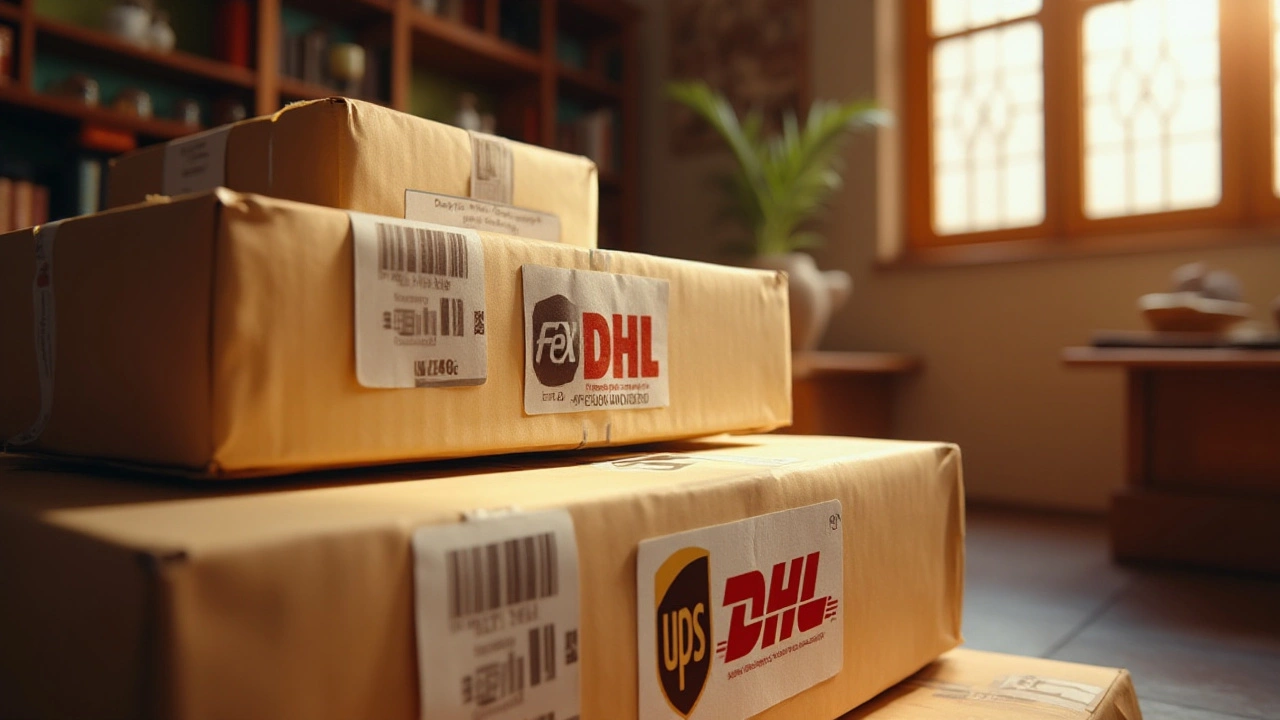
Tips for Successful Overnight Shipping
When it comes to ensuring that your package arrives on time, efficient planning is key. Begin by understanding the cutoff times for various overnight shipping services. Carriers often have specific times by which packages need to be dropped off or scheduled for pickup. Missing these could delay your package's departure until the next day. For instance, FedEx and UPS typically have afternoon cutoffs, but it's essential to confirm these times in your area, especially during busy periods like the holiday season or disruptive weather conditions.
Proper packaging is a crucial factor that many overlook. Choose packing materials that suit the item you're shipping. Use sturdy boxes, and for fragile items, reinforce with plenty of bubble wrap or foam peanuts. Most carriers advise labeling packages clearly with both the sender’s and recipient's details on multiple sides of the package. This can prevent mishandling or misplacement during the transit process.
Another tip is to provide accurate and complete recipient information. This includes the full name, complete address, and contact number. Many delays happen because of incomplete or incorrect addresses. Using services with built-in address verification can avoid these pitfalls. Plus, choosing to include an email or SMS notification service, if available, keeps both you and the recipient informed throughout the journey.
The choice between cost and speed can also play a pivotal role in your shipping strategy. Often, opting for the cheapest rate may not guarantee the fastest delivery. Consider the package's urgency and value; pricier options sometimes offer better guarantees, especially for high-value or time-sensitive shipments. Evaluating customer reviews and service reliability for each carrier can be insightful. As Alex Hummels from Supply Chain Magazine puts it,
"The mindset should not only be on cutting costs; it should be on maximizing efficiency without compromising service quality."
Don’t underestimate the power of using technology to track your shipment. Most carriers have advanced tracking systems, allowing you to trace your package in real-time. Setting up notifications can provide peace of mind, particularly for critical deliveries. During transit, it's essential to account for potential delays due to customs or weather disruptions, especially for international shipments. Planning a buffer zone for unexpected circumstances can save you a lot of stress.
Lastly, familiarize yourself with the claims and refund policies of your chosen carrier in case anything goes awry during transit. Knowledge of the process and required documentation beforehand can expedite any claims you might need to make. Understanding these policies and making use of carrier support hotlines whenever issues arise are best practices that can safeguard your shipping interests. With careful planning and these tips in mind, your next-day delivery can be both smooth and successful.
